An automatic wheelchair ramp was fitted to an SBS Transit MAN A95 bus as part of a six-month trial, which took place from September 2017 to March 2018.
The bus involved was SG5835M, making it the first public bus in Singapore to be equipped with an automated wheelchair ramp. Allocated to Bus Service 76, it was also the first MAN A95 to be operated by SBS Transit, preceding the trial of SG5999Z.
The automated wheelchair ramp trial was part of an ongoing study by the Land Transport Authority to study the feasibility of automated ramps, while weighing “operational, practicality and cost considerations.”[1]
The trial eventually proved unsuccessful. Although SG5835M retained its automatic ramp, such automatic ramps were not rolled out to other public buses after the trial.
Background
Public buses with automated wheelchair ramps are a common sight in some cities such as London, Paris and Perth. However, since their introduction in 2006, all wheelchair-accessible buses were equipped with manually-operated ramps fitted on the floorboard of the exit door. In Singapore, it is standard procedure for Bus Captains to deploy the ramp manually while assisting with wheelchair boarding and alighting.
Automated ramps for buses are intended to allow quicker boarding and alighting for wheelchair-bound passengers as compared to manual ramps, resulting in overall time-savings for commuters and less burden for bus drivers. However, automated ramps are more costly to procure, and with moving parts and mechanisms, they cost significantly more to maintain, since inspection and maintenance are required on a far more frequent basis.
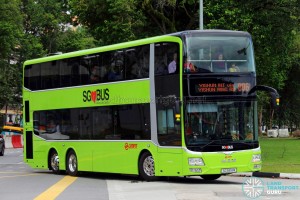
As of the article’s time of writing (September 2017), SBS Transit mainly operated Volvo double-deck buses under the Bus Contracting Model. SG5835M is the first MAN bus model leased to SBS Transit. SMRT Buses, which then operated the largest fleet of MAN A95 buses in Singapore, has 77 units with the older design (SMB5888H-SMB5904U, SG5740C-SG5799J), and 30 units with the first facelifted design (SG5800M – SG5829G). Tower Transit also operated SG5999Z, a 3-door 12.8-metre concept bus.
As for MAN buses, SBS previously operated a MAN 16.240 HOCL demonstrator unit registered as SBS81S, entering service in 1991 and retiring in 2008. Another demonstrator unit was a MAN 18.240 HOCL-NL registered as SBS8031J, a low-entry bus entering service in 2008. It was retired in 2009 after SBS Transit picked the Scania K230UB chassis for its large-scale fleet renewal.
Pre-Launch
On 20 July 2017, SBS Transit registered its first MAN A95 bus, SG5835M. The bus was spotted on route training for SBS Transit Bus Service 71, an upcoming Bus Service Enhancement Programme (BSEP) Bus Service under the Seletar Bus Package on 28 August 2017 while displaying the route details.
Launch Day Observations
On 9 September 2017, SG5835M entered revenue service on SBS Transit Bus Service 76 in the late morning. However, the SBS Transit corporate logos were yet to be pasted on the bus. The bus was recalled back to Ang Mo Kio Bus Depot in the early afternoon and returned to revenue service only in the late afternoon with the corporate logo applied, and operated several more trips in the evening.
Automated Wheelchair Ramp
SG5835M is equipped with Masats RT1 Dual Telescopic Ramp, installed underneath the exit door. When deployed, the automated ramp extends outward by one metre, and at 0.8 metres in width, is suitable for a large variety of wheelchairs and mobility scooters.
Supplied by Spanish manufacturer S.A. Masats, the company presently supplies electric door systems and manual wheelchair ramps for transit buses in Singapore, notably those of the MAN brand, including the MAN NL323F, MAN NG363F, and MAN A95. The telescopic ramp allows for a maximum load of 300kg, and a maximum 17-degree platform inclination.
During the automated deployment, a constant beeping sound alerts commuters to the ramp movement.
Deployment Procedure
It was observed that the exit door must first be closed before the ramp can be deployed. When the green button is pressed (mounted on the top right of the exit door), the ramp deployment process starts. This process is best illustrated in the video above.
When deploying, the exit doors first pop open to allow the ramp cover to fold downwards unobstructed. The doors then close while the ramp extends automatically, and reopens again after the ramp is fully deployed.
When stowing the ramp, the reverse process occurs. Pushing the green button, the doors close and the ramp retracts automatically. Just before the ramp fully retracts, the doors pop open again to allow the ramp cover to fold upwards unobstructed, before closing again.
The additional step of popping the door open to extend and stow the ramp was necessary as the exterior door gasket overlaps with the ramp cover, interfering with the ramp movement. In other regions, similar automated ramps fitted to buses are designed to not interfere with the normal operation of the exit door.
Despite the automated ramp, Bus Captain are still required to leave the driver’s cab and assist passengers-in-wheelchair with boarding and alighting, as is standard procedure in Singapore.
As of 2021, it was observed that the Bus Captain could deploy and retract the ramp without having to leave the driver’s cab. It is not known whether this is an original feature or added sometime after its debut.
Further intake
SBS Transit’s second MAN A95, SG5853K, is equipped with a manual wheelchair ramp. It made its revenue service debut on 2 October 2017, running on Bus Service 151. Other SBS Transit MAN A95 buses were deployed on Service 19 as well as Service 47.
Post Trial
In a response to a May 2021 forum letter published in The Straits Times, the Land Transport Authority shared the findings of its six-month trial of the automatic wheelchair ramp. It cited the following disadvantages, which are consistent with the experiences of bus operators overseas where buses have automated wheelchair ramps:
- Longer stopping times at bus stops
(more time required to extend and retract compared to a manual ramp) - Longer waiting times for commuters and other bus services serving the bus stop
- Increased maintenance due to complex set-up of automated ramp
The LTA also shared that automated ramps were prone to failure and contributed significantly to service disruptions. This is because a bus would not be able to continue operating safely if the automated ramp fails to retract. Although the Masats automatic ramp can be operated manually in the event of a fault with the powered mechanism, it is believed that Bus Captains are not given the key required to switch between said operating modes.
In view of these findings, the Land Transport Authority decided not to replace the manual ramps with automated ones.
Gallery:
Related Content
- MAN A95
- MAN A95 Gallery
- New MAN A95 buses for SMRT
- Buses with USB Charging Ports Hit The Roads
- New MAN Lion’s City Facelift DD Buses
- The making of a bus – MAN Lion’s City DD
- LTA evaluates 3-door MAN Lion’s City DD Concept Bus
- MAN A95 bus models launched by Knackstop
External Links & References
- [1] Auto ramps for buses under study, The Straits Times
- [2] RT1 Dual Telescopic Ramp – Masats (PDF)
- LTA testing out automated wheelchair ramp for buses in six-month pilot, Transport News & Top Stories – The Straits Times [Accessed 26 May 2021]
- Forum: Time to install automated wheelchair ramps on buses, Forum News & Top Stories – The Straits Times [Accessed 26 May 2021]
- Forum: Automated wheelchair ramps found unsuitable following trial, Forum News & Top Stories – The Straits Times [Accessed 26 May 2021]
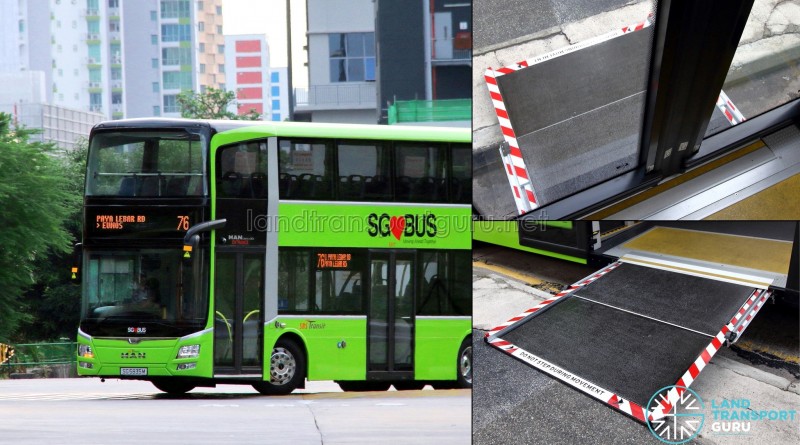
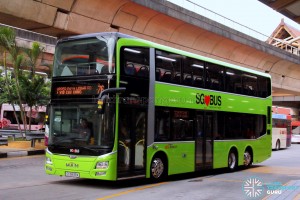
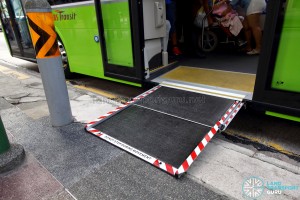
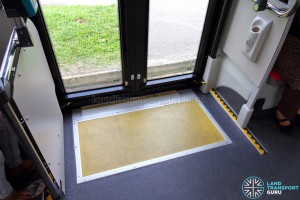
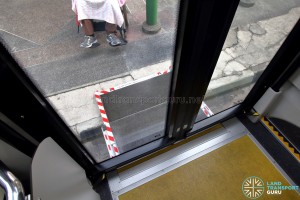
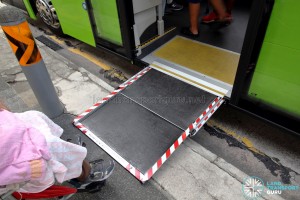
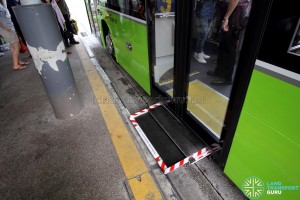
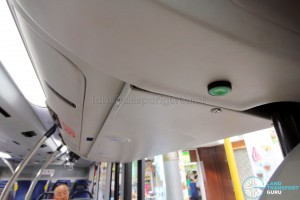
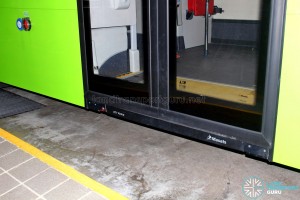
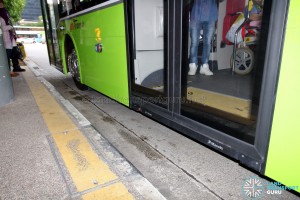
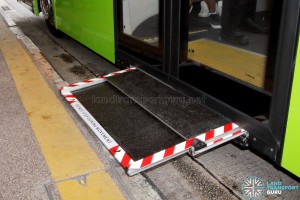
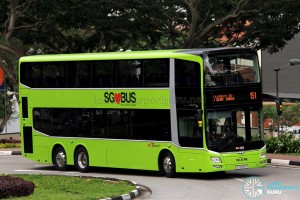
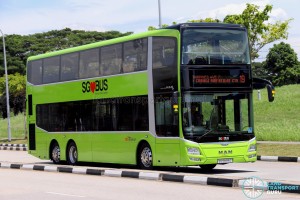
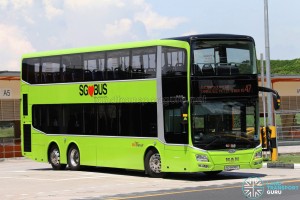
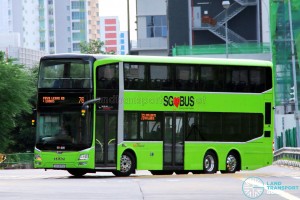
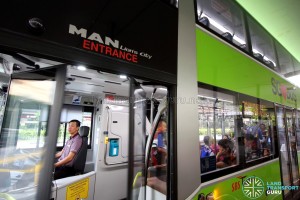
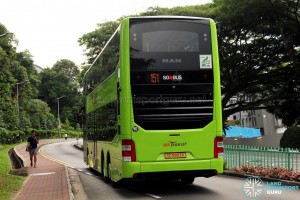
When LTA wanted it to fail, it fails.
Longer stopping times at bus stops (more time required to extend and retract compared to a manual ramp)
->In the first place, the ramp is meant to be deployed without the driver leaving the cabin. However, LTA decided to add a switch at the rear door for the driver to activate the ramp. The time taken would have been a lot shorter if the driver were to deploy at his seat as compared to walking to the ramp and deploy. Automatic ramps are not new, in UK, it has been used extensively with no issues.
The LTA also shared that automated ramps were prone to failure and contributed significantly to service disruptions. This is because a bus would not be able to continue operating safely if the automated ramp fails to retract.
->This is a biggest bullshit. Where is the statistics of the ramp failing? Manual ramp does’nt fail? Even for manual ramps, if ramp sensor fails, the bus would’nt be able to move off. There are overrides for such failures to ensure operation.
Looking forward to have more MAN A95s in Sengkang.
Pls serve 2 of this bus to 168 and 161